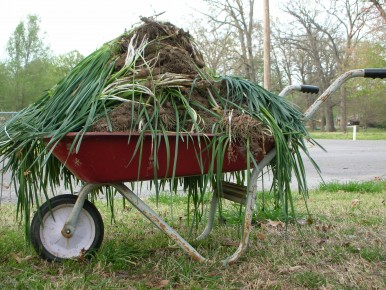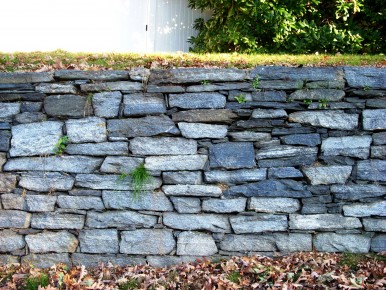Spring has sprung! And now that it’s here, Endless Summer Landscapes offers up some essential spring cleaning tips to help LynnValleyLife readers beautify their properties, lawns and gardens. (Learn more about this local company by reading its LVL Merchant Profile!)
Prune away dead and damaged branches
- Where tree or shrub branches have been damaged by cold, snow, and wind, prune back to live stems; use a handsaw for any that are larger than half an inch in diameter.
- Shaping hedges with hand pruners, rather than electric shears, prevents a thick outer layer of growth that prohibits sunlight and air from reaching the shrub’s center.
- Prune summer-flowering shrubs, such as Rose of Sharon, before buds swell, but wait to prune spring bloomers, like forsythia, until after they flower.
 Cut back and divide perennials as needed
Cut back and divide perennials as needed
- Prune flowering perennials to a height of four to five inches, and ornamental grasses to two to three inches to allow new growth to shoot up.
- Dig up perennials, such as daylilies and hostas, to thin crowded beds; divide them, leaving at least three stems per clump, and transplant them to fill in sparse areas.
- Cut back winter-damaged rose canes to one inch below the blackened area. On climbers, keep younger green canes and remove older woody ones; neaten them up by bending the canes horizontally and tipping the buds downward. Use jute twine or gentle Velcro fasteners to hold the canes in place.
Clean up around plants
Rake out fallen leaves and dead foliage (which can smother plants and foster disease), pull up spent annuals, and toss in a wheelbarrow with other organic yard waste.
Now is a good time to spread a pelletized fertilizer tailored to existing plantings on the soil’s surface so that spring rains can carry it to the roots. Add a 5-10-10 fertilizer around bulbs as soon as they flower to maximize bloom time and feed next season’s growth.
Use pins to fasten drip irrigation lines that have come loose and a square-head shovel to give beds a clean edge and keep turf grass from growing into them.
Compost yard waste
- Dump collected leaves, cuttings, spent foliage, and last season’s mulch into your compost pile.
- Shred leaves and chip branches larger than half an inch in diameter to accelerate decomposition, or add a bagged compost starter to the pile. Keep the pile as moist as a wrung-out sponge, and aerate it with a pitchfork every two weeks. Just don’t add any early spring weeds that have gone to seed—they might not cook completely and could sprout.
Prep damaged lawn areas for spring seeding
Spring is a good time to test the soil’s pH so that you can assemble the right amendments.
- Remove turf damaged by salt, plows, or disease to prepare for the seeding that should follow in a few weeks.
- Work in a ½-inch layer of compost to keep the new seed moist, increasing the germination rate. Begin seeding once forsythia starts blooming in your area.
- In warmer climates, April is a good time to add the first dose of fertilizer.
- Remove dead turf with a square metal rake, then flip it over to spread turf soil.
 Neaten up hardscape surfaces
Neaten up hardscape surfaces
- Rake escaped gravel back into aggregate walkways and patios, and order more gravel to spread in large depressions, which often form near the driveway’s apron.
- Refill joints between flagstones by sweeping in new sand or stone dust; water with a hose to set it, then repeat.
- If the freeze-thaw cycle has heaved pavers out of place, remove them and replenish the base material as needed before setting pavers back in.
- Use a pressure washer with a low pressure tip to remove slippery algae spots or leaf stains from patios and walkways.
Patch or replace and paint worn wood
- Remove badly rotted or damaged pickets, boards, or lattice, then scrub wood structures clean with a mix of two gallons water, two quarts bleach, and one cup liquid soap; let dry.
- Patch rotted sections with wood epoxy; install new wood as needed.
- Check wobbly fence posts to see if they need replacing. Scrape off old paint, then sand wood all over with 60 grit to prep for a new finish coat, brush on a new coat of paint or stain.
